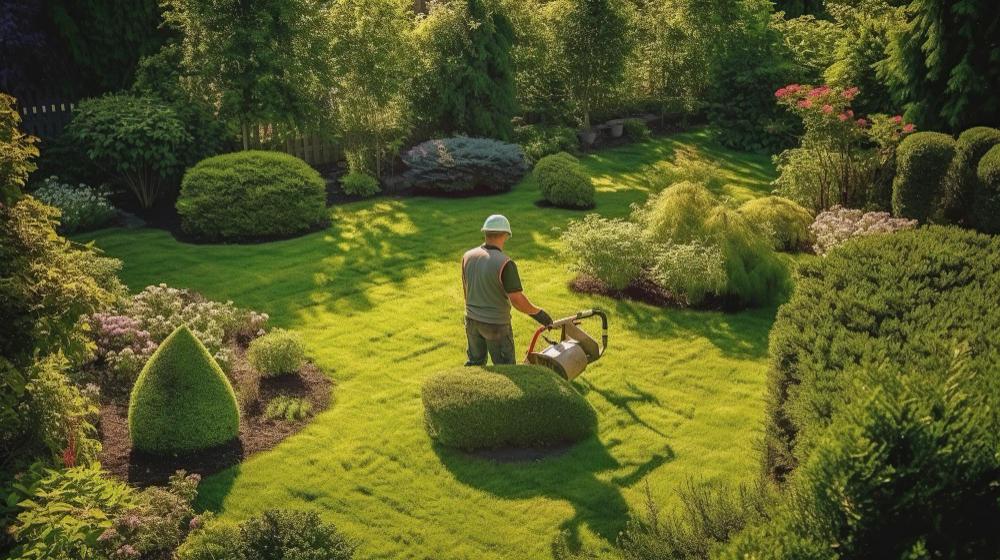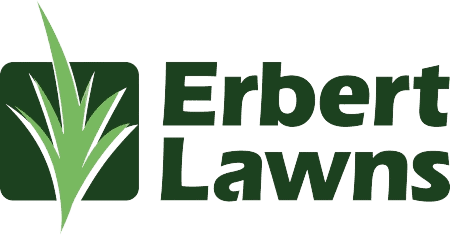
- Key Takeaways:
- Understanding Lawn Renovation
- When to Consider Lawn Renovation
- Step-by-Step Lawn Renovation Guide
- Continued Care for Your Lawn
- Intensive Care: Post-Renovation Maintenance
- Regular Feeding Schedule
- Persistent Weed Management
- Mowing Practices
- Watering Wisely
- Aeration and Overseeding
- Advanced Techniques for Lawn Enhancement
- pH Adjustment
- Disease Management
- Professional Consultation
- Embrace Eco-Friendly Practices
- Conclusion
- FAQs
Revamping your turf involves more than just watering and mowing. At Erbert Lawns, we understand that lawn renovation is an essential practice to maintain the lushness and health of your garden. This introductory guide will navigate through the basic steps to breathe new life into your lawn.
Key Takeaways:
- Revitalize Your Turf: Learn to assess the health of your grass to determine the need for renovation.
- Optimal Techniques: Discover the best practices for aeration, seeding, and topdressing.
- Routine Maintenance: Grasp the importance of continuous care post-renovation to ensure lasting greenery.
- Professional Insight: Consider professional help to perfect the art of lawn care.
- Resource Utilization: Utilize high-quality resources to assist you in each step of the renovation process.
Understanding Lawn Renovation
Renovation of your lawn typically becomes necessary when it suffers from various ailments such as thin grass, compacted soil, or extensive weed problems. At Erbert Lawns, we emphasize rejuvenating your garden by following a series of methodical steps designed to restore its health and beauty.
When to Consider Lawn Renovation
It’s crucial to recognize the signs that suggest a lawn renovation might be necessary:
- Sparse Grass: Areas in your lawn where the grass is thin or bare.
- Compaction: Soil that is dense and does not absorb water well.
- Weed Overgrowth: When weeds have overtaken the grass.
Step-by-Step Lawn Renovation Guide
- Assessment: Firstly, evaluate the condition of your lawn. Look for patterns of distress and mark areas that need extra attention.
- Preparation: Clear the area of weeds and debris. This might involve herbicide applications and raking off dead grass.
- Aeration: Using an aerator, perforate the soil to alleviate compaction. This enhances nutrient absorption and stimulates root growth.
- Seeding: Select a high-quality seed that matches your existing lawn.
- Topdressing: Apply a thin layer of compost or soil mix to protect the new seeds and provide nutrients.
- Watering and Maintenance: Make sure to water the soil on a regular basis to maintain a damp but not waterlogged condition. Monitor growth and start mowing when the grass reaches an appropriate height.
Gain insights and strategies for effective lawn renovation and ongoing maintenance with Erbert Lawns’ Lawn Care Learning Center.
Continued Care for Your Lawn
Post-renovation care is critical. Regular mowing, watering, and fertilization are paramount to maintaining the verdant allure of your lawn. Schedule consistent check-ups with professionals at Erbert Lawns to keep your lawn in peak condition.
Intensive Care: Post-Renovation Maintenance
Maintaining your lawn after the renovation is as crucial as the steps taken to refresh it. Here are some strategies to ensure that your lawn remains a verdant oasis:
Regular Feeding Schedule
Regular nourishment is key to sustaining the lush appearance of your lawn. This consistent feeding replenishes nutrients and encourages vigorous growth.
Persistent Weed Management
Even after careful weeding during the renovation process, unwanted plants can return. Employ pre-emergent herbicides to prevent weed seeds from germinating, and spot-treat any pesky weeds that pop up using targeted solutions from reputable resources like EPA’s guide on herbicides.
Mowing Practices
Proper mowing is vital to lawn health. Keep your blades sharp and only cut one-third of the grass height at a time to avoid stress on the grass. This technique encourages roots to grow deeper, which supports overall turf health and resilience.
Watering Wisely
Irrigation should not be uniform across all seasons. Tailor your watering habits to the weather and soil conditions. During hot, dry periods, infrequent but deep watering encourages deeper root growth, which helps the lawn survive drought conditions. On the other hand, overwatering can promote fungal growth and soil compaction, so moderation is key.
Aeration and Overseeding
Annual or biennial aeration helps relieve soil compaction, allowing oxygen, water, and nutrients to penetrate deeper into the ground. Following aeration with overseeding is an excellent way to introduce resilient grass varieties and fill in bare spots, enhancing the overall density and color of your lawn.
Advanced Techniques for Lawn Enhancement
To further improve your lawn’s health and appearance, consider integrating these advanced techniques:
pH Adjustment
Soil pH significantly affects turf health. Testing your soil’s pH annually and adjusting it with lime (to decrease acidity) or sulfur (to increase acidity) can create a more favorable growing environment.
Disease Management
Keep an eye out for signs of disease, such as discolored patches or slimy areas. Fungicides can be effective in treating many common lawn diseases, but proper identification and timely application are crucial to prevent spread.
Professional Consultation
Don’t hesitate to consult with lawn care professionals at Erbert Lawns. Our expertise can help diagnose more complex issues and recommend precise treatments.
Embrace Eco-Friendly Practices
In today’s environmentally conscious world, consider using organic products and methods to maintain your lawn. These practices not only minimize your ecological footprint but also promote a healthier, more sustainable lawn ecosystem. From organic fertilizers to natural pest control solutions, every little bit helps in preserving the natural beauty and health of your outdoor space.
By following these guidelines, you can ensure that your lawn remains a beautiful, resilient, and healthy part of your home landscape. Whether you choose to tackle lawn renovation on your own or with professional help from Erbert Lawns, the right approach and ongoing care can make all the difference.
Conclusion
Ready to transform your lawn into a verdant sanctuary? Erbert Lawns is here to help. Our team of experts is just a click away—reach out to us today for personalized advice and top-notch lawn care services.
FAQs
Q: Which season is ideal for remodeling a lawn?
A: Ideally, early fall or spring is the best season for lawn remodeling to allow grass to establish without extreme weather conditions.
Q: How regularly should my freshly planted lawn be hydrated?
A: Water daily or as needed to keep the soil moist until the new grass is well established.
Q: Do I need to use fertilizer on my new lawn?
A: Yes, applying a starter fertilizer can enhance root growth and help establish your new lawn more robustly.
Q: Can I renovate my lawn using organic methods?
A: Absolutely, organic renovations can include using natural weed killers and organic compost for topdressing.
Q: What should I do if my lawn doesn’t improve after renovation?
A: It might be helpful to consult with a lawn care specialist from Erbert Lawns to evaluate other potential issues or treatments.








